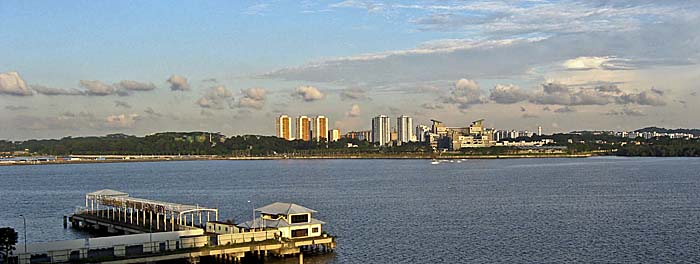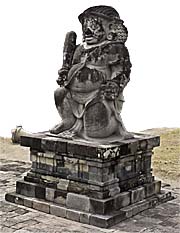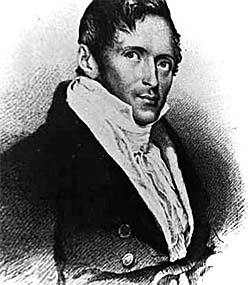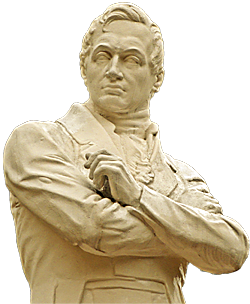3.
Singapore and the Dutch - British Conflict
In 1818 Raffles became governor of Bencoolen (nowadays: Bengkulu) on west Sumatra. In this time competition between British estates and the Dutch under their aggressive governor led Raffles to the idea to found another British post in the region. He convinced the general governor of India, Lord Hastings, to send an expedition to Southeast Asia to found a new trade settlement. That led to the foundation of Singapore in 1819.
The foundation of Singapore was somewhat tricky and required diplomatic skills. The Dutch weren't happy about a new British trade port. Though, after inspecting some possible places (including the Riau Islands further south), the island neighbouring the southern tip of the Malayan peninsula was chosen as a strategically good place. There was no Dutch post nor a Malayan one. The place got the name Singapore (Singa = Lion, Puram = city, Sanskrit, Lion City). The next local Kingdom was Johor, north of Singapore. The ruling Raja (King) had just died, and while the crown prince was absent, the Dutch made the younger son the new Raja. Raffles therefore supported the older son, Hussein, and succeeded to make him the ruling Raja. Hussein therefore became a well-paid supporter of the British interests in Singapore.
Soon after Raffles also planned to establish another British post at the very northern tip of Sumatra (Aceh). The Dutch got informed of that by a Malayan Raja and took immediately action against it. Diplomatic protest notes and the trial to block Singapore followed, but they didn't take any military action. Nevertheless, the activities triggered a deeper crisis in the relationship between the two colonial powers.
The ongoing tensions between the Dutch and the British empires led a few years later to the Anglo-Dutch Treaty of 1824, in which the two imperialist powers came to a general agreement on territorial division in Southeast Asia.
In 1822 Raffles returned a last time to Singapore, reforming administration thoroughly. He also gave the exponentially fast growing new post a new, structural and well-done city planning, called the 'Jackson Plan'. Basically the old part of Singapore is nowadays still in the state as it was built after the Jackson Plan (Phillip Jackson was the colonies engineer).

Singapore, seen from Johor Baru, Malaysia. In the foreground the old ferry pier for the border crossing. Image: Asienreisender, 2010
Sir Thomas Stamford Raffles died on the evening before his 45th birthday in London due to a stroke. It's supposed that he suffered a brain tumor.




